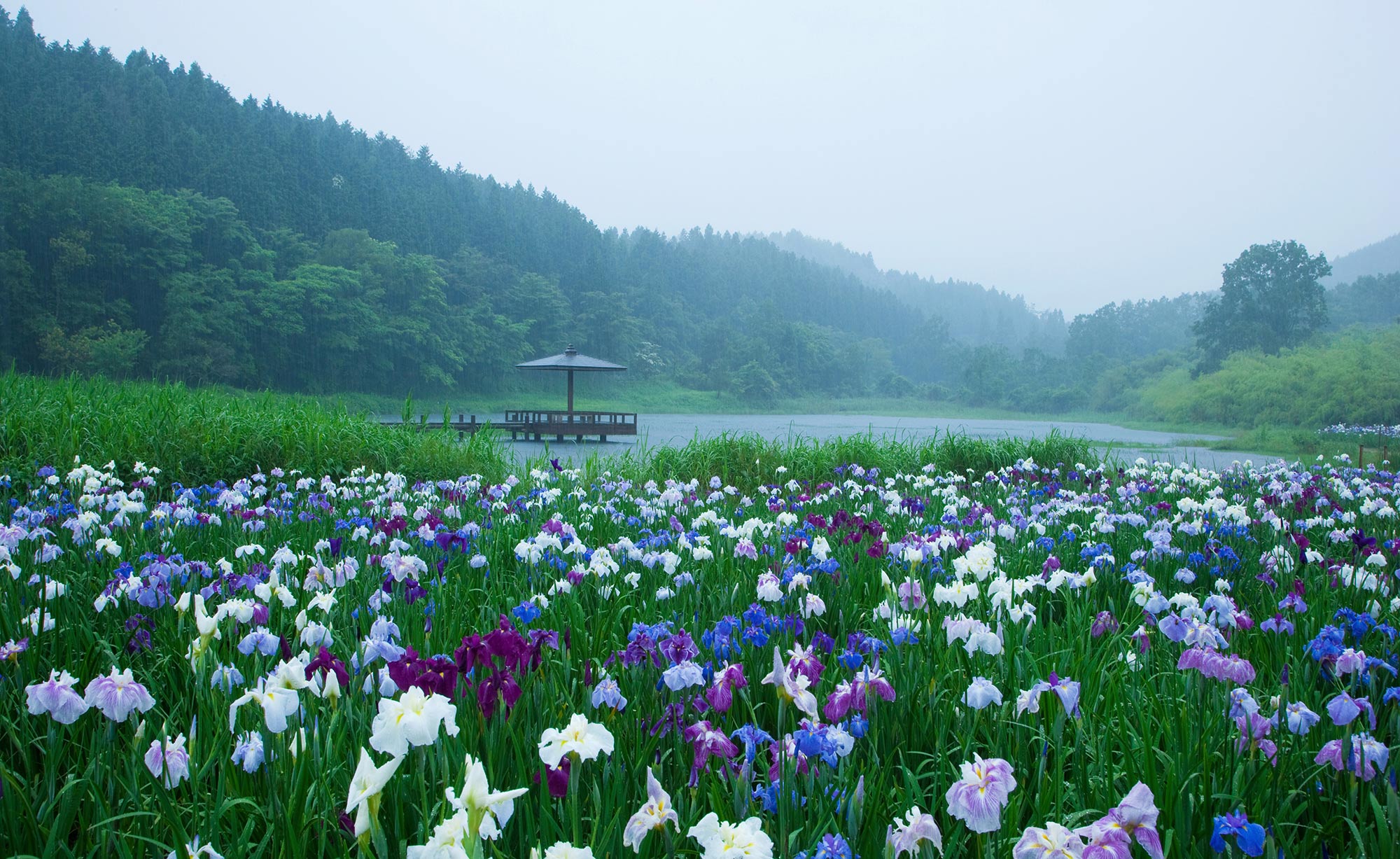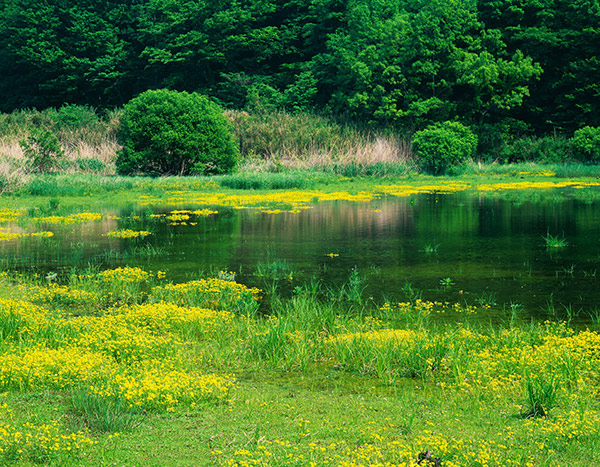

- Beppu & Yufu
- Landscape
Kagurame Lake
Photography/TAKEUCHI Yasunori
Flowers Coloring the Rainy Season
The Japanese iris suits the rainy season well. In June, nearly 300,000 flowers compete for beauty at Kagurame Lake in Okubeppu. This is now renowned nationwide as one of the most famous spots in Kyushu.
Go about 2.5 kilometers southeast from the temple gate marking the entrance to Mt. Tsurumi on Trans-Kyushu Expressway, then enter through Shidaka Lake. The altitude is 540 meters, and the circumference about one kilometer. In the marshlands of the lakeshore is a flower garden with more than 15,000 bushes in nearly 80 varieties, as well as a walking path with zigzag bridges and a resting area.
The Japanese iris is an improved variety of the wild Japanese water iris. This has been known for a long time as a classic garden species, which can be broadly divided into three lines: the Edo line, the Ise line, and the Higo line. Toward the end of the Edo period, there were more than 200 varieties. Currently, there are thought to be thousands of varieties, based on combinations of flower coloring, border shape, and more.
Incidentally, there is a saying, “An iris or a rabbit-ear iris.” This phrase is used when something is difficult to distinguish, such as these two flowers both in the iris family, and it gets even more confusing when Japanese iris is added. However, the Japanese iris comes in a variety of colors, including not only purple but blue, yellow, pink, white, and more, and the difference is readily apparent if you compare it to an ordinary iris. There is also sweet flag, the Acoraceae family of flowers, in early May.
The gardens on the lakeshore make use of Mount Yufu and Mount Tsurumi, and many different flowers bloom in the area throughout the seasons, but we recommend going in the early morning if you wish to see the Japanese iris. When the flowers are drenched in morning mist and dripping with dewdrops is the best time. Of course, rains during the rainy season are also good.
The name of Kagurame Lake comes from a legend about women who lived nearby and performed kabuki at Mount Tsurumi Shrine during the Heian Period, and one could say that the Japanese iris is just as timeless and bewitching as kabuki. There is a walking path about one kilometer long connecting to Shidaka Lake as well as the trailhead entrance for Mount Ojika, apple orchards, and a youth retreat nearby.

Kagurame Lake delights visitors with flowers that bloom throughout the seasons. Japanese iris, pictured above. Below is the Japanese buttercup (Ranunculus japonicus).

